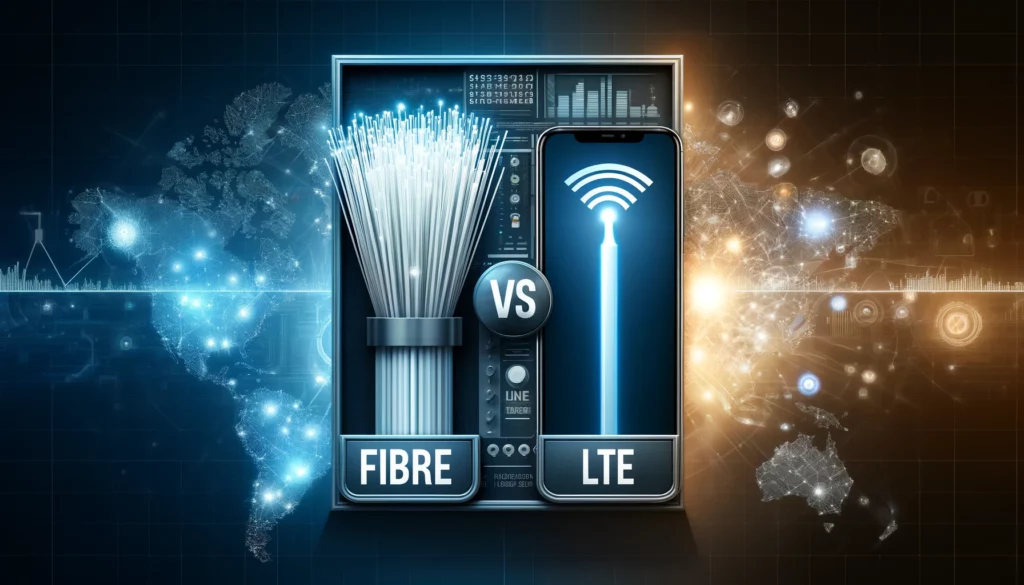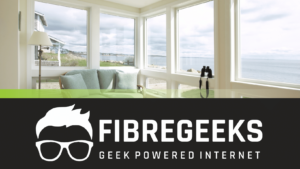Choosing Between Fibre and LTE: What’s Best for Your Internet Needs in South Africa?
The Connectivity Conundrum
In a digital world, the type of internet connection you have can make all the difference in your daily life, whether for work, entertainment or communication. In South Africa there are two main contenders: fibre and LTE. Each has its pros and cons, so it’s important to understand the ins and outs of both to make an informed decision.
This article will break down the key features of fibre vs LTE in South Africa, including performance, cost and use cases. By the end you’ll know which connection is best for you, whether you’re a business owner, remote worker or casual browser.
Fibre: The Fast One
What is Fibre?
Fibre optic internet is a type of broadband that uses light signals transmitted through glass or plastic fibres to deliver data at super fast speeds. Unlike copper cables, fibre optic connections are less prone to interference and can support much bigger bandwidths. Fibre has become a popular choice in urban areas of South Africa where high speed internet demand is growing.
Fibre is known for its symmetrical upload and download speeds making it great for users who need a stable connection for video conferencing, online gaming and large file transfers. In South Africa various service providers offer fibre connections for both residential and business needs.
Speed and Stability: Meeting Business Demands of Urban Areas
One of the biggest advantages of fibre internet is its speed. With download speeds often over 1 Gbps fibre can handle multiple devices at the same time without lag. This is especially important for businesses that require online operations to be seamless. In an environment where multiple employees are working off the same network fibre ensures that bandwidth is not a bottleneck.
Fibre connections also don’t slow down with more users, so you get a stable and reliable internet experience. This is a game changer for businesses that rely on cloud services, video streaming and real-time communication tools.
Installation Costs: Worth it?
While the benefits of fibre are many, the installation costs are higher than LTE. This includes trenching, laying down cables and the necessary networking equipment. However many users find that the long term benefits outweigh the upfront costs. Over time fibre can lead to increased productivity and reduced downtime.
Also with government initiatives and private investment to improve infrastructure fibre is becoming more accessible and the pricing is becoming competitive. It’s recommended that potential users compare different service providers to find the best installation deals and long term contracts.
Future Proof Your Connection
Fibre is often considered a future proof choice. As technology advances and data demand increases fibre can handle the loads and you won’t get left behind. With 5G on the horizon and smart homes becoming more common having a fibre connection will keep you ahead of the game.
Plus as more businesses go remote and online services grow the need for robust internet infrastructure will only get bigger. Fibre is the perfect solution for now and the future so it’s a long term investment.
Scalability: Grow with Your Business
One of the key benefits of fibre is scalability, which is great for businesses. As businesses grow their data needs will grow. Fibre networks can be upgraded to higher speeds and more users without having to change the existing infrastructure.
This flexibility means businesses can adapt to changing market conditions and increased demand without having to rip and replace their entire internet services. That saves cost and time in the long run.
LTE: The Flexible Option
What is LTE?
Long Term Evolution (LTE) is a wireless broadband technology that delivers high speed internet through cellular networks. Unlike fibre which requires physical cables to deliver data, LTE uses radio signals transmitted from cell towers. That makes LTE a more flexible option that can be deployed quickly in areas where laying cables is difficult or uneconomical.
In South Africa LTE has become popular especially in rural and semi-urban areas where fibre infrastructure is limited. It allows users to access the internet without being tied to a specific location, making it a great option for mobile users and those who need connectivity on the go.
Wireless Connectivity: For Remote Areas
One of the biggest benefits of LTE is it can deliver internet in areas where traditional wired connections can’t. That’s especially important for remote areas in South Africa where infrastructure has lagged behind urban areas. With LTE users can get high speed internet almost anywhere there is a cell signal.
This means businesses and individuals in remote areas can participate in the digital economy, remote work, e-learning and telehealth services. LTE has become a lifeline for many in areas that were previously underserved.
Cost-Effectiveness: Budget vs Performance
In terms of upfront cost, LTE is generally cheaper than fibre. This is a big plus for startups and small businesses who want to keep overheads low. You can choose from various data plans that suit your needs without the fibre installation fees.
But you have to weigh the long term value against short term savings. While LTE is cost effective, it may not always be as fast and reliable as fibre especially during peak hours when the network gets congested.
Speeds and Reliability: What to Expect
LTE can deliver impressive speeds—up to 100 Mbps— but these speeds are not always consistent. It depends on network congestion and signal strength. Users may experience slower speeds during peak hours which can hinder productivity and online activities.
Plus LTE’s performance can vary greatly depending on location and number of users on the same network. For individuals or businesses that need a steady and reliable connection, this inconsistency can be a big minus compared to fibre’s reliability.
Fibre vs LTE: What to Choose
Long Term Growth vs Short Term Flexibility
When choosing between fibre and LTE, you have to consider your long term needs vs immediate needs. If you’re a business or a heavy internet user who relies on high speed connections for tasks like video conferencing or cloud usage, fibre is the way to go. Its speed, reliability and future proofing makes it a valuable asset for long term productivity.
If you need a more flexible solution that can be adjusted based on current demands, LTE might be the better choice. Its wireless nature allows for easy setup and mobility, perfect for those who need to connect on the go or in areas where fibre is not available.
Evaluate Your Situation: Which one is for You?
Your situation will be the deciding factor between fibre and LTE. Consider your location, services available, budget and how you use the internet. For example if you live in a urban area with fibre options available, it’s the best for you. If you travel frequently or live in a rural area, LTE might be your only choice.
Conclusion: The Future of Connectivity in South Africa
FibreGeeks: Your Partner in Reliable Fibre Solutions
As South Africa continues to embrace the digital revolution, the demand for reliable internet connectivity will only grow. Whether you choose fibre or LTE, both options have unique benefits tailored to different needs. For users in urban settings with high demands for speed and reliability, fibre is likely the best choice. Contact FibreGeeks
FAQs
For more information, visit our FAQs
1. What is the main difference between Fibre and LTE?
The primary difference lies in the technology used for data transmission. Fibre uses glass or plastic cables to deliver data at high speeds, while LTE uses cellular networks to provide wireless internet access.
2. Which option offers better speeds?
Fibre typically offers superior speeds compared to LTE, with download speeds often exceeding 1 Gbps. LTE speeds can vary, usually ranging up to 100 Mbps, depending on network congestion and signal strength.
3. Is Fibre more expensive to install than LTE?
Yes, fibre generally has higher initial installation costs due to the need for physical cables and infrastructure. LTE usually requires less setup and is therefore more budget-friendly initially.
4. Can Fibre be used in rural areas?
While fibre can be installed in rural areas, it is often less common due to infrastructure challenges. LTE is typically more accessible in these regions, providing a reliable option for internet access.
5. Which connection is better for businesses?
Fibre is generally better for businesses that need a stable and high-speed internet connection for tasks like video conferencing, cloud computing, and large file transfer









